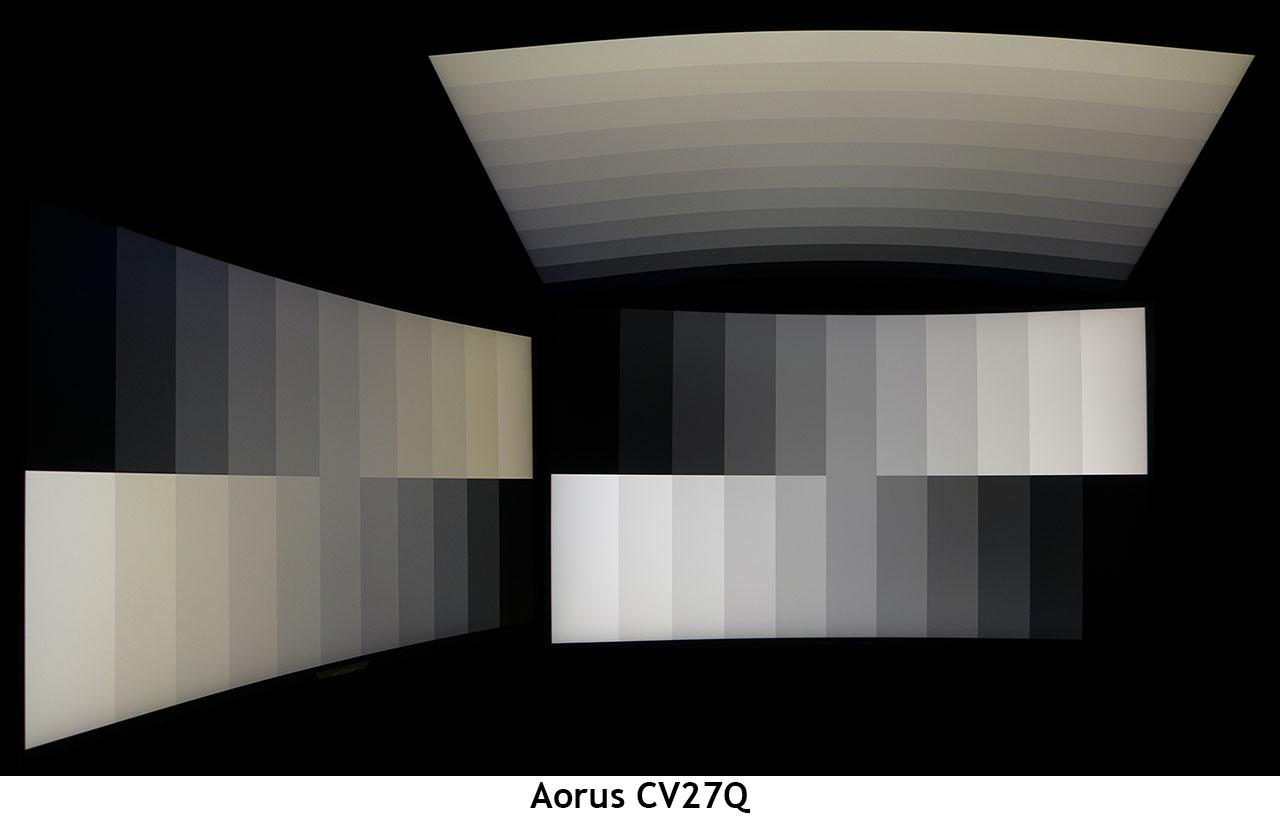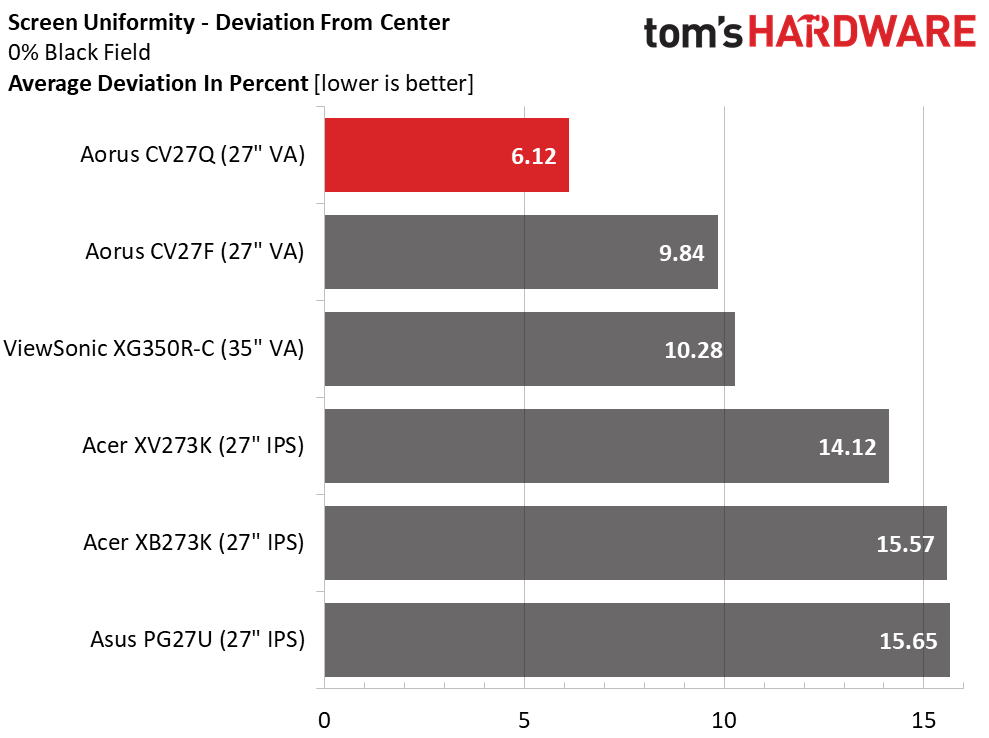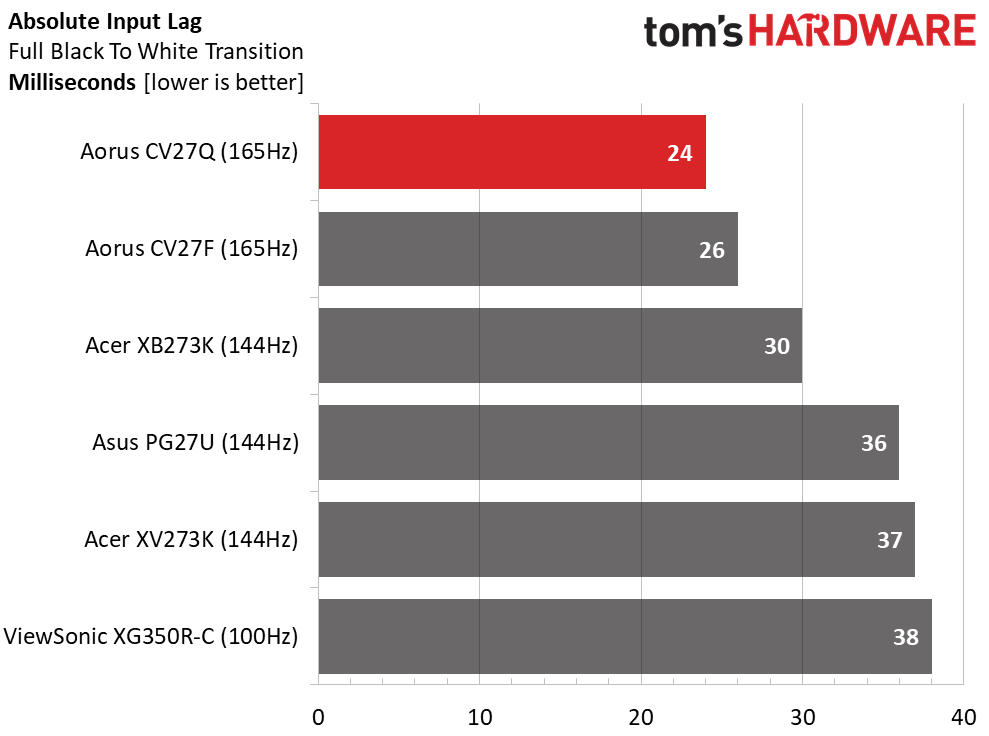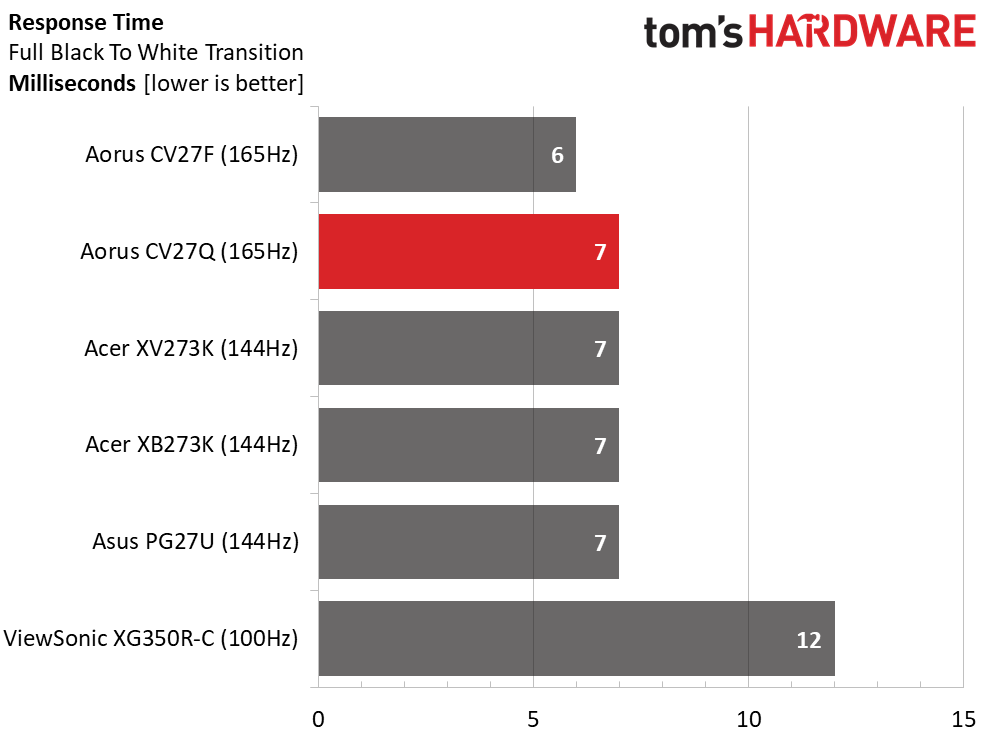Why you can trust Tom's Hardware
Viewing Angles

The CV27Q has excellent off-axis image quality when compared to other VA monitors. Light falloff is only about 30%, and the color shift to green is minimal. Detail is still easy to see in both highlight and shadow areas. The top-down view has a more washed-out look, but detail is still visible throughout the brightness range with a 40% brightness reduction and the same level of green shift.
Screen Uniformity
To learn how we measure screen uniformity, click here.

The CV27Q has one of the most uniform screens we’ve ever measured. In our test database, there aren’t too many monitors that come in at less than 6% deviation. Obviously, there are no visible hotspots glow or bleed. Both Aorus monitors are above-average in this regard, which speaks to Gigabyte’s solid quality control.
Pixel Response and Input Lag
Click here to read up on our pixel response and input lag testing procedures.


With their 165 Hz refresh rates, we expected both Aorus monitors to top our response time chart. The 1ms difference in response scores is likely due to the CV27Q’s higher pixel count. In practice, both panels boast next to non-existent motion blur. And as mentioned, the CV27Q’s fastest overdrive setting doesn’t cause ghosting, so it’s perfectly usable.
The CV27Q picks up an advantage over its FHD counterpart in the lag test. In fact, the QHD monitor is one of the fastest 165 Hz monitors we’ve ever tested. That 2ms might just make the difference for gamers at the highest skill levels.
MORE: Best Gaming Monitors
Get Tom's Hardware's best news and in-depth reviews, straight to your inbox.
MORE: How We Test Monitors
MORE: All Monitor Content
Current page: Viewing Angles, Uniformity, Response and Lag
Prev Page HDR Performance Next Page Conclusion
Christian Eberle is a Contributing Editor for Tom's Hardware US. He's a veteran reviewer of A/V equipment, specializing in monitors. Christian began his obsession with tech when he built his first PC in 1991, a 286 running DOS 3.0 at a blazing 12MHz. In 2006, he undertook training from the Imaging Science Foundation in video calibration and testing and thus started a passion for precise imaging that persists to this day. He is also a professional musician with a degree from the New England Conservatory as a classical bassoonist which he used to good effect as a performer with the West Point Army Band from 1987 to 2013. He enjoys watching movies and listening to high-end audio in his custom-built home theater and can be seen riding trails near his home on a race-ready ICE VTX recumbent trike. Christian enjoys the endless summer in Florida where he lives with his wife and Chihuahua and plays with orchestras around the state.